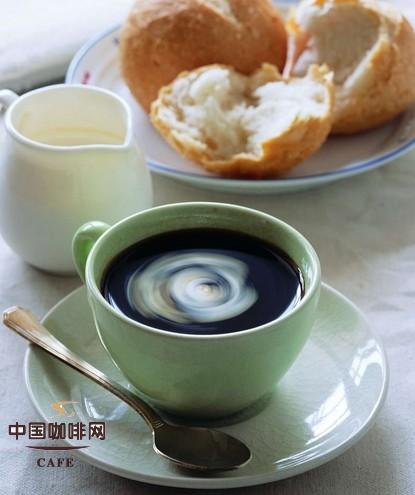Coffee and dim sum match according to the taste of coffee

The general principle of coffee with a meal is similar to that of wine, that is, strong coffee matches strong food; on the contrary, lighter coffee matches lighter food. For example, South American coffee and Hawaiian coffee taste mild and smooth, this kind of coffee should be paired with lighter spring and summer desserts, while coffee produced in Africa is generally thick and suitable for rich but digestible diet and desserts. Indonesian coffee is mellow and suitable for greasy and sweet meals and desserts Deep-baked coffee and espresso are more suitable for foods made of chocolate.
Breakfast is a good time to drink coffee, which may affect your mood throughout the day. If you eat breakfast mainly with bacon and eggs, you'd better choose Kenyan AA coffee, Tanzanian or Colombian super coffee, because these coffee are thick and refreshing and sour. If you only eat some light food for breakfast, such as muffins, fruit or waffle, you'd better choose a cup of Zimbabwean or Guatemalan coffee.
Generally speaking, in western food, it is inevitable to eat some desserts after dinner, such as pudding, ice cream, etc., while some traditional Chinese cuisines also stress eating a little dessert after dinner, if you choose a suitable kind of coffee at this time, it will also bring you unlimited comfort at night.
Light desserts, such as small cookies or fruit steaks, are best served with medium-bodied South American coffee such as Guatemalan, Brazilian Santos or Mexican coffee; Sumatran Mandarin and Ethiopian mocha coffee are better served with rich desserts; desserts with chocolate are the sweetest and best served with strong coffee Any chocolate dessert must be served with deep-baked single coffee or deep-baked blended coffee. The more chocolate there is, the stronger the coffee should be. Small desserts covered with chocolate, such as chocolate pie, are best paired with a blend of 1ram, 2 French coffee and 2mocha-Java coffee.
Coffee can be made into a good dessert with wine, spices, cream and whipped cream. At least one more mellow African or Indonesian coffee should be added to the deep-roasted blended coffee used in making this dessert. Because the wine will dilute the coffee, the coffee should be made thicker to retain its original strong flavor.
Important Notice :
前街咖啡 FrontStreet Coffee has moved to new addredd:
FrontStreet Coffee Address: 315,Donghua East Road,GuangZhou
Tel:020 38364473
- Prev

Coffee schedule the best time to drink coffee
As a representative of fashion and delicacy, coffee has been favored by countless beauties. However, drinking coffee without paying attention to time will cause harm to the body of coffee beauties. Coffee contains caffeine, which excites the sympathetic nerves after entering the body, thus eliminating drowsiness, improving blood circulation, and the body also feels warm and does not feel tired, so it has a refreshing effect. But hand in
- Next

Common sense of Italian coffee dry cappuccino and wet cappuccino
Dry cappuccino (Dry Cappuccino) refers to more milk foam, less milk conditioning method, drink coffee taste stronger than milk flavor, suitable for people with heavy taste to drink; wet cappuccino (Wet Cappuccino) refers to less milk foam, more milk practice, milk flavor over the thick choking coffee flavor, suitable for light taste. The flavor of the wet cappuccino is similar to that of the popular latte. General
Related
- Beginners will see the "Coffee pull flower" guide!
- What is the difference between ice blog purified milk and ordinary milk coffee?
- Why is the Philippines the largest producer of crops in Liberia?
- For coffee extraction, should the fine powder be retained?
- How does extracted espresso fill pressed powder? How much strength does it take to press the powder?
- How to make jasmine cold extract coffee? Is the jasmine + latte good?
- Will this little toy really make the coffee taste better? How does Lily Drip affect coffee extraction?
- Will the action of slapping the filter cup also affect coffee extraction?
- What's the difference between powder-to-water ratio and powder-to-liquid ratio?
- What is the Ethiopian local species? What does it have to do with Heirloom native species?

